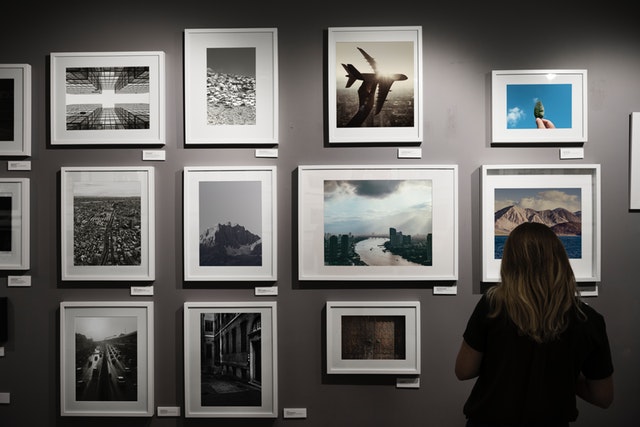Art is a novelty that is created by an artist lost in the folds of solitude. Still, a piece of the acute sense of a painter manages to create ripples in the static souls of people and consequentially the society. The cultural spectrum holds in itself a color which is not easy to understand. This aptly describes the relationship between the art exhibitions and the society in which we live. They share a long and intriguing history together. The art either changes according to the demands of the realm or it grows irrespective of the backlashes and criticism it faces.
A catalyst of change.
Exhibitions and modern art gallery help artworks and ideas behind them to see the light of the day. They act as a bridge between the modern audience so that people could cherish the ideas behind them and make art join the mainstream. Exhibitions forces society to look into the mirror and give it a subject matter of introspection. It reflects upon its beauties and vileness, supporting its spirit while challenging its dogmas. The significant role which an art exhibition plays in society is ensuring that art remained relevant to the audience at all times. This makes it an indispensable part of the historical timeline.
Significance of an art exhibition
Paula Marincola in her book ‘What Makes a Great Exhibition?’ says, “Exhibitions are strategically located at the nexus where artists, their work, the art institution, and many different publics intersect.”, regarding the role and status of exhibitions in the popular culture. The exhibitions have an unsettled position but, on the other hand, they also have a dual role which makes them steadfast. When they get associated with a larger institution, they tend to further the monumental responsibility of the institution of maintaining the institution such as promoting it and generating avenues of increasing viewership and generating revenues. They also serve as a platform for introducing new things to the social strata. They challenge the existing diktat in search of a new dawn of ideas that is bellowed by the needs of our dynamic society.
The Advent of the Culture of Exhibition
The art exhibitions emerged as an interlocutor between the artists of the western world and their audience. This change was witnessed in the wake of the 18th and the 19th century. In ancient times, greek and roman artists used to display their work for critical appraisals and looked out for any signs of disapproval. After a positive response, they are installed in public spaces. Usually, these were commissioned and reflected a religious side. Autonomous art was rare and beautiful but, controversial. This process was followed religiously throughout the Middle Ages as most of the artworks generated were commissioned by the church.

The sixteeth century witnessed a change, artists started to attach their names on the artworks they created. This gave birth to a revolution as these artists could now reflect their own aesthetics and nature as artists. Artistic capitals of the world held art exhibitions in the 17th century like Rome, Florence, Venice etc. which also became a home for large religious congregations and festivals. By this time. Artists had realized the potential of these exhibitions as they could provide them a platform to display their art and make a reputation of their own.
The Function and Objectives of the Art
Art was never a subject matter for ideological musings in the historical timeline. This has recently found place as a subject. It is now explored to answer the societal and cultural role. Exhibitions are a medium through which the art gets recognized and known to people. They also help in defining and identifying the meaning of a tradition. This shows the nature of art experience which ned a deep study to understand.
Natural aims and objectives of these types of exhibitions were to display the point of view of an artist. This tried to present to the public art in an organized and planned way which bestowed to its strategic importance. Through these activities, people are left with asking questions to themselves that what possibly could have inspired the artist. Then, they try to find the answers to these questions. In this quest, they discover the true meaning of that art and themselves.
Art also tells a story. You just need to have keen and observant eyes. These contexts ended up in outlining the purpose of art exhibitions in our lives. It is like a spark to the tinder of existence. it is a medium and a catalyst of change and revolution. It is an art in itself. So, cheers to the art exhibitions for being there for us to stir us from a deep slumber and see the new dawn of refreshing ideas, laiding foundations for the modern art gallery and making our lives better.

